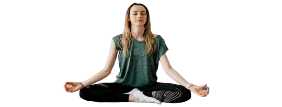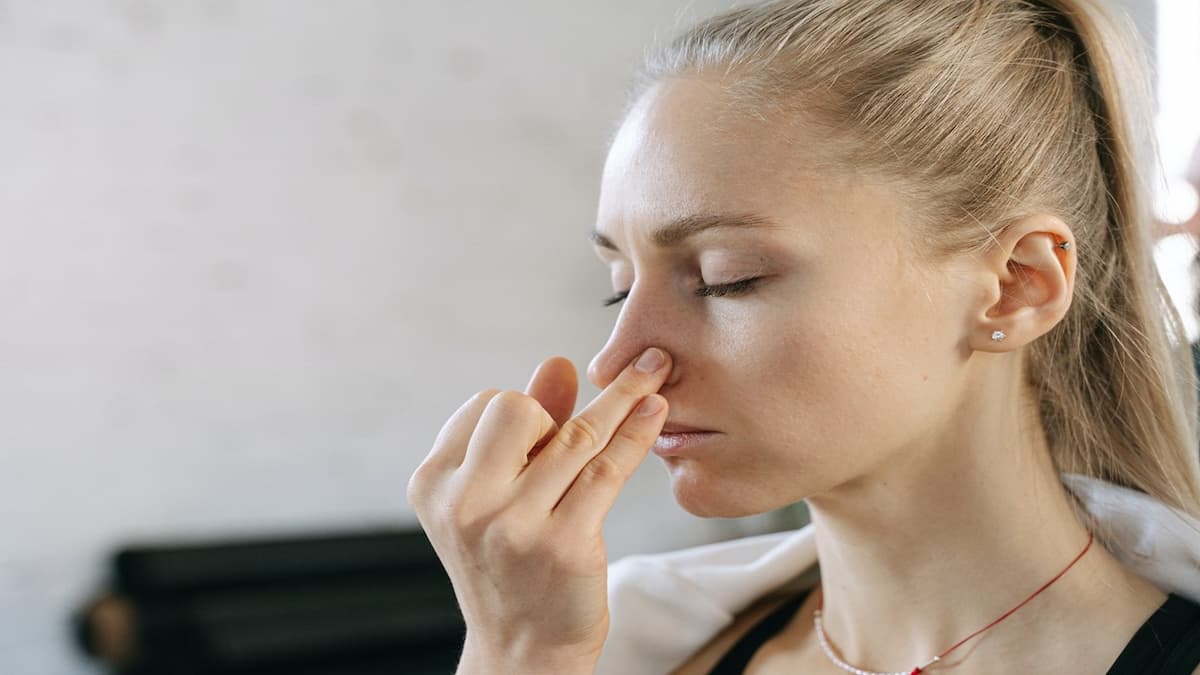Overview
Chandra Bhedana Pranayama is a single nostril breath control technique similar to Surya Bhedana Pranayama. Moreover, it activates the Lunar Swara Cycle. Hence, it cools down the body and is relaxative in nature. However, it is not one of the eight classic Pranayama techniques described in Hatha Yoga Pradipika and other yoga texts. Still, it improves physical and mental health. Considering this, the practitioner should understand the details of its practice, steps, precautions, contraindications, and benefits.
Chandra Bhedana Pranayama Meaning and Details
The Sanskrit word Chandra means the Moon. It refers to Ida Nadi, a psychic channel on the left side of Sushumna. Similarly, the Sanskrit word Bhedana means to pierce or to pass through. Hence, Chandra Bhedana Pranayama is a breath control technique that pierces the left psychic channel. Psychic channels are the pathways of Pranic energy. This Pranayama technique purifies or clears all the blockages in the left psychic channel and ensures the free flow of Pranic energy. Therefore, it gets this name. Modern Yogis call it Left Psychic Channel Cleansing Breath. Also, some people call it Left Nostril Breath as the technique involves mainly the left nostril.
During the course of breathing, either of the nostrils is more active than the other. If your right nostril is more dominant, your Surya Nadi (Pingala Nadi) is active. Similarly, if your left nostril is more dominant, your Chandra Nadi (Ida Nadi) is active. If your Sushumna is active, breathing in both nostrils is equal. This is the normal cyclic breathing pattern where one of the three Nadis is active at a time. This breathing cycle is known as Swara Cycle. The related practice of Yoga is Swara Yoga. When you perform Chandra Bhedana, you are forcefully activating Ida Nadi during the practice.
Chandra Bhedana Pranayama Precautions and Contraindications
As this practice tends to decrease blood pressure, persons having hypotension should not practice it.
Moreover, this practice is relaxative, one should avoid it before participating in events that require dynamic body involvement, say a basketball match or a Yogasana session. One study concludes that Chandra Bhedana prior to basketball may decrease performance. (Virendra Singh et al., 2016). Another study confirms that it will delay the reactivity of subjects inducing a state of parasympathetic dominance. (Ananda Bhavanani et al., 2014).
Performance for a longer duration may alter your Swara Cycle.
The practitioner should avoid foods of cold potency. Articles of hot potency should be taken during lunar Swara.
Chandra Bhedana Pranayama Steps
I give below the basic procedure. A beginner can start with this and include Bandhas at a later stage.
Step 1
Sit in a meditative yoga posture. Close your eyes and breathe slowly for a couple of minutes.
Step 2
Put your right palm in Nasikara Mudra wherein the ring finger of your right hand occludes your right nostril by pressing the right nostril on the outside.
Step 3
Then, inhale slowly through the left nostril in such a manner as to cause friction in the throat up to the heart. Now, retain the breath to your capacity by pressing the left nostril on the outside by thumb. Both of your nostrils are pressed from outside.
Step 4
Then, release the pressure on the right nostril and exhale slowly. In short, the inhalation is restricted to the left nostril, and Exhalation is specified through the right nostril. This is one round.
Step 5
Repeat Steps 2 to 4. Ten rounds are enough for a beginner.
Chandra Bhedana Pranayama Benefits
It activates the Ida Nadi which is synonymous with Parasympathetic Nervous System in medical terminology. Hence, it helps in conditions like anger and anxiety.
The practice is unwinding and relaxative.
It has the potential to lower blood pressure. So, it can be used in conditions like high blood pressure and cardiac diseases.
Left Nostril Breathing lowers blood glucose levels. Hypertension coexists with diabetes for most individuals and Chandra Bhedana can be helpful for them. (Ananda Balayogi Bhavanani, 2005).
Bottom Line
Both Left Nostril and Right Nostril Breathing are conducive to specific health conditions and circumstances. A practitioner can alter the Swara according to the requirement.

